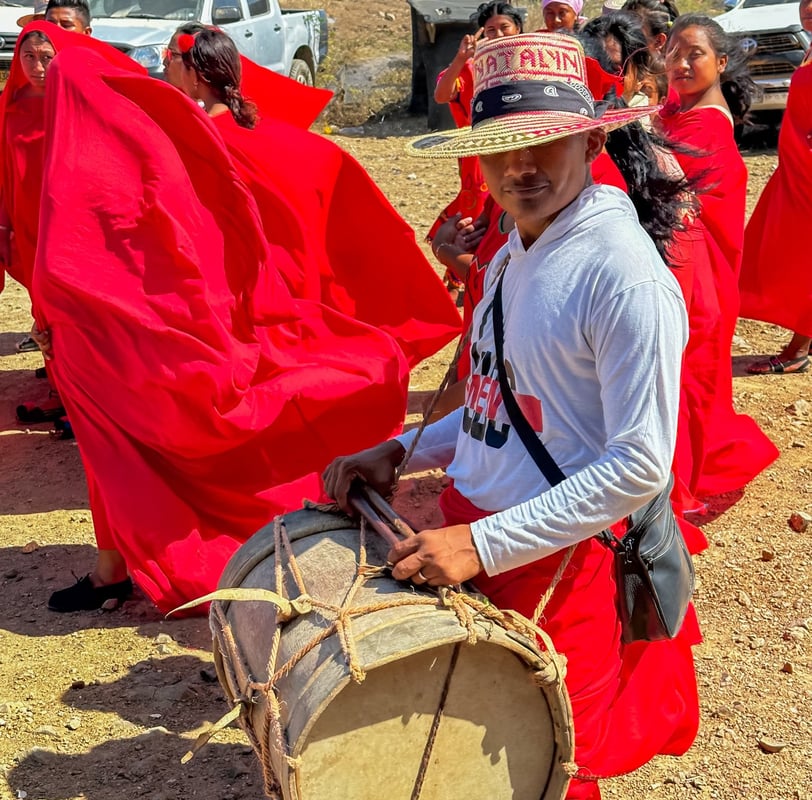Add your promotional text...
Children at Risk: Violated Rights, Environmental Impact and Indigenous Realities
This article explores the multiple violations faced by children in today's world, with a special focus on indigenous children and the devastating effects of environmental change on their lives. It analyses how factors such as poverty, discrimination and environmental degradation affect their development, identity and future, highlighting the urgency of comprehensive policies that protect their fundamental rights and promote their well-being in a sustainable environment.
Carlos Fernández Ramírez
5/8/20242 min read


Childhood, as a crucial stage of human development, faces countless challenges in today’s world. These challenges are exacerbated in vulnerable communities, where children’s fundamental rights are not only ignored but also gravely violated. Within these contexts, indigenous childhood and environmental change emerge as interconnected issues that demand immediate attention.
Violations of Children’s Rights
Globally, children face a wide range of violations that affect their physical, emotional, and social development. Lack of access to quality education, malnutrition, child labor, and high rates of domestic violence are persistent problems impacting millions of minors worldwide. These conditions not only infringe upon their fundamental rights but also perpetuate cycles of poverty and social exclusion, limiting their future opportunities.
Adding to this is the lack of adequate public policies that prioritize childhood as a key group. In many cases, investments in health, education, and child welfare are insufficient or mismanaged, leaving millions of children without the necessary support to grow up in a safe and protective environment.
Indigenous Childhood: Double Vulnerability
Indigenous children face a double vulnerability: as minors and as members of historically marginalized communities. These communities often live in extreme poverty and isolation, where access to basic services such as clean water, healthcare, and education is severely limited.
Additionally, cultural and racial discrimination restricts opportunities for indigenous children, relegating them to the margins of society. The loss of their territories and the imposition of foreign cultural models deeply affect their identity and sense of belonging, leaving them culturally and socially defenseless.
In terms of education, indigenous children often encounter systems that neither respect nor integrate their languages and traditions, leading to high dropout rates and perpetuating exclusion. This lack of cultural representation in education systems not only affects their academic performance but also contributes to the erosion of their cultural identities.
Environmental Change and Its Impact on Children
Climate change and environmental degradation worsen the living conditions of millions of children, particularly in vulnerable and indigenous communities. Droughts, floods, and biodiversity loss directly impact food security, exposing children to malnutrition and diseases related to contaminated water.
For indigenous communities, whose livelihoods are closely tied to nature, environmental impacts are devastating. The loss of natural resources affects their ability to secure food, water, and shelter, leaving children in extreme precarity. Additionally, forced migration due to environmental disasters separates families and exposes children to risks such as human trafficking, labor exploitation, and violence.
An Urgent Call to Action
The combination of these violations creates an alarming scenario for children in general and even more so for indigenous children affected by environmental change. Public policies must adopt a comprehensive approach that addresses the structural causes of these issues. This includes investing in inclusive educational programs, protecting the territorial rights of indigenous communities, and implementing strong measures to mitigate the effects of climate change.
Children must be at the center of efforts to build a sustainable and equitable future. Protecting their rights and ensuring them a healthy and safe environment is not only a moral obligation but also an investment in the well-being and stability of our societies. Acting now is essential to ensure that all children, regardless of their origin or circumstances, have the opportunity to reach their full potential.
